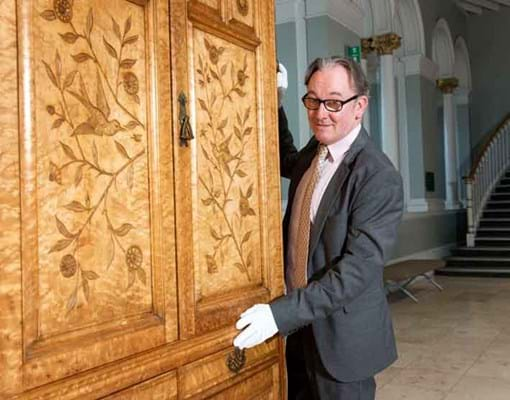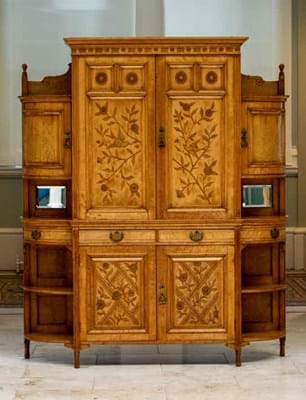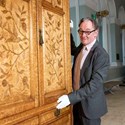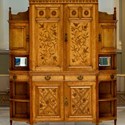The museum curators will now carry out further research to find out whether the item - entitled Harmony in Yellow and Gold - The Cloud Cabinet - was made for the 1878 Paris Exposition Universelle, for Whistler's Godwin-designed White House or for another project/collaboration between Godwin, Whistler and William Watt Art Furniture.
The cabinet was purchased from Michael Whiteway of Kensington Church Street dealers Haslam and Whiteway (British 19th century design). The acquisition was made possible by funding from the Art Fund and the National Museums Scotland Charitable Trust, although NMS would not disclose how much was paid.
An NMS spokeswoman said: "The object is hugely important in the history of 19th century art and applied arts. In the style of the Anglo-Japanese Aesthetic movement, the cabinet is the result of an artistic collaboration between Godwin, an influential designer of the Aesthetic movement, and Whistler, the most controversial and celebrated painter of the Aesthetic movement.
"The cabinet has a William Watt Art Furniture label and carries Whistler's signature design motif, the butterfly. The vendor purchased the item from descendants of the previous owners who purchased the cabinet in 1947 from the estate of Edward Hussey Packe."
Showcase
It will be displayed in Edinburgh, in one of four new galleries currently being designed to showcase NMS's collections of art and design. These spaces, along with six new galleries of science and technology, comprise the £14m next phase of the masterplan to transform NMS.
Whistler's work on this cabinet is almost identical in style to some of his painting on the Harmony in Yellow and Gold: The Butterfly Cabinet 1877-78 which is also in Scotland, housed in the collections of the Hunterian Museum in Glasgow, and in the Peacock Room he redecorated, on show in the US.
The Hunterian's cabinet was bought at Christie's on October 4, 1973, with support from the National Fund for Acquisitions and the Art Fund. It formed Godwin's centrepiece at the 1878 Paris Exposition Universelle. Whistler painted this fireplace/cabinet and the flanking dado and wall.
The Peacock Room, now housed in the Freer Gallery of Art at the Smithsonian in Washington, was originally designed by architect Thomas Jeckyll for British shipping magnate Frederick Leyland, who wanted a place to showcase his blue-and-white Chinese porcelain collection in his London home. Whistler redecorated the room in 1876-77.
Whistler designed his own studio-house in Tite Street, Chelsea, known as the White House, in collaboration with Godwin. But its construction and furnishing coincided with the Ruskin libel trial in autumn 1878. The trial's expenses drove Whistler into bankruptcy and resulted in the forced auction of many of his possessions and the sale of the White House, where he lived for only one year. The house was demolished in the 1960s.









